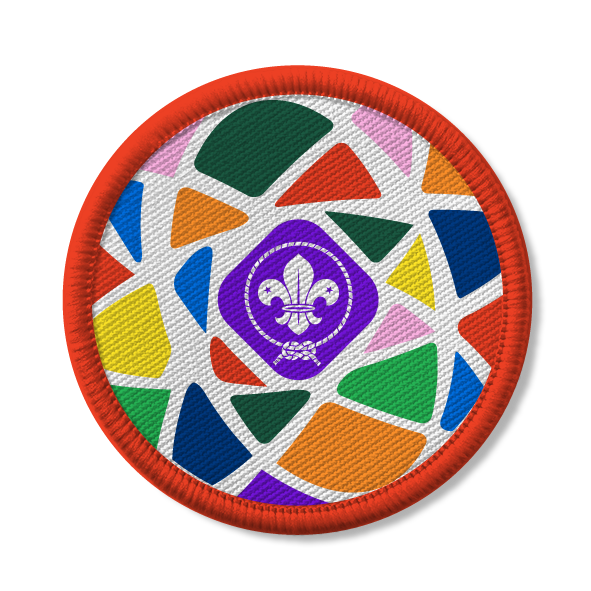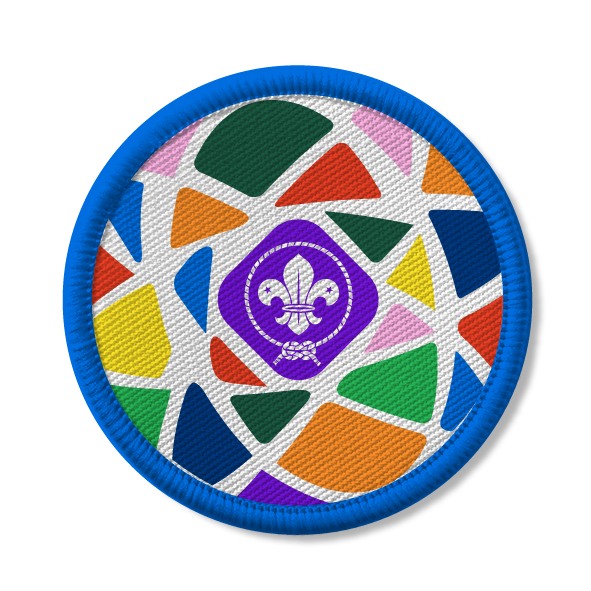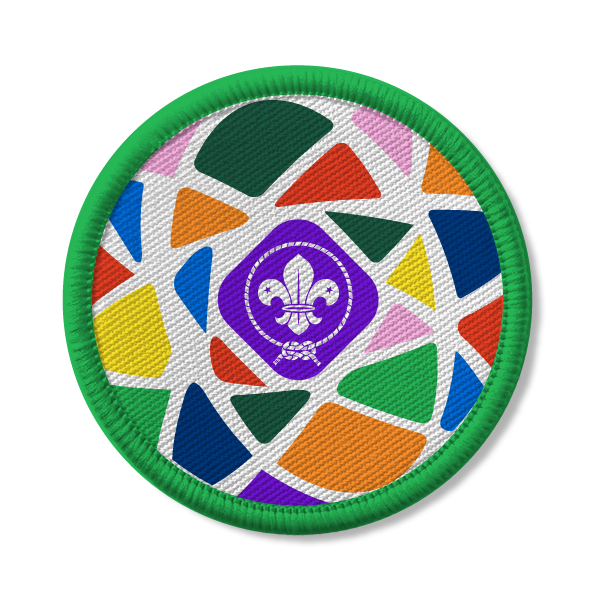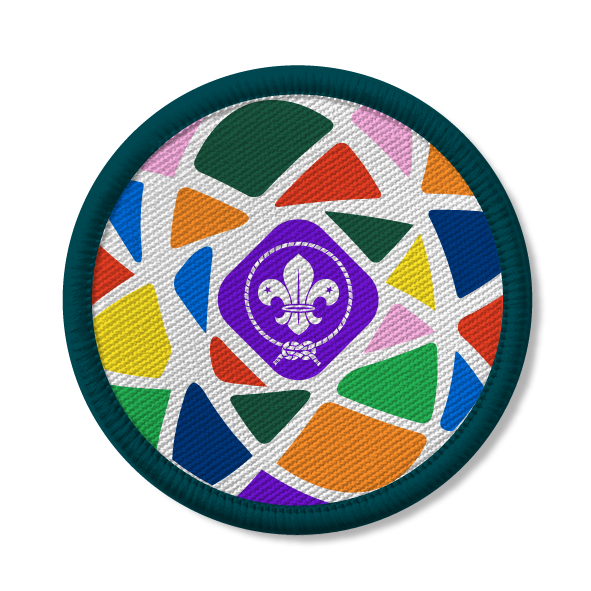
Web of life
You’ll need
- Scrap paper
- Sticky tape
- Pens or pencils
- Scissors
- A ball of string
- Inflatable ball (optional)
Before you begin
- You’ll need to make a label with the name of a plant or animal on it for each player. It’s OK to use a plant or animal more than once, and it’s up to you whether you copy the example animals we’ve suggested or make up your own.
- Decide how you’ll display the labels while everyone catches, holds, and throws string during the game. You could use sticky notes, stick scrap paper on with sticky tape, or ask everyone to prop their labels up somewhere everyone can see.
- If you’ve got a large group, you may want to split into smaller groups for this game.
Play the game
- Everyone should sit in a circle.
- The person leading the game should give everyone a label and tell them how to display them.
Make sure that everyone can see all of the labels before you continue.
- The person leading the game should explain that the group now represents an ecosystem – a community of living things.
- Everyone should go around the circle and read out their plant or animal. The person leading the game should make sure that everyone knows what the plants and animals are.
- The person leading the game should give someone the ball of string.
- The person with the ball of string should look around the circle and find something they think they’re connected to, for example, something they’d eat (or be eaten by!) or a place they’d live.
For example, a squirrel may choose an acorn because squirrels eat acorns.
- The player with the string should hold onto the end of the string, throw the rest of the ball of string to the player they’re connected to, and explain how they’re connected.
For example, the squirrel would hold onto the end of the string and throw the ball of string to the acorn, telling everyone they’re connected because squirrels eat acorns.
- This player with the string should repeat steps six and seven. They should make sure they keep holding onto the string when they throw the rest of the ball of string to the next person in the circle.
- Everyone should continue making connections and throwing the ball of string around until everyone is connected at least once.
The middle of the circle should quickly start to look like a spider’s web.
- Everyone should talk about how the connections shows how all of the different plants and animals are connected to each other.
- The person leading the game should choose one or two strings. They should carefully cut these strings with scissors and explain that this represents something being removed from the environment.
For example, a species becoming extinct (dying out) or an environment changing because people have chopped down the trees.
- Everyone should talk about how cutting one or two strings affects other parts of the web.
Some effects are obvious. For example, the plants and animals directly connected to the removed labels have been left without food or shelter. Encourage everyone to think about the knock-on effect on other species. How will removing one plant or animal end up affecting the whole ecosystem?
- The person leading the game should help everyone understand that this shows why all sorts of life is really important. This variety of life is called biodiversity – WWF talk about biodiversity as ‘the magic ingredient that enables the world to work smoothly’.
- The person leading the game should explain that humans are part of this web of life – we need biodiversity to survive.
- The person leading the game could show everyone Our Planet’s video about biodiversity. Who better to explain it than David Attenborough?
You could use one of these lists or create your own. We’ve included some examples of how things are connected to get you started – but they’re not the only connections that exist.
Woods
- Oak tree: grows the acorns, provides a home for the squirrel, is a part of the woods where deer like to live, provides somewhere for the blackbird to nest.
- Acorn: is food for the squirrel and deer, can grow into a new oak tree, can provide a home for some beetles.
- Brambles: grow blackberries, which are eaten by the blackbird and squirrel.
- Beetle: may live inside an acorn, eaten by the blackbird.
- Worm: eaten by the blackbird and fox, good for the soil and helps fallen acorns grow into oak trees, good for the soil and helps grass to grow for the deer to eat.
- Blackbird: might be eaten by the fox, makes its nest in the oak tree, eats the beetle, eats the worm, eats blackberries from the brambles.
- Squirrel: might be eaten by the fox, eats the acorn, eats the blackberries from the brambles, hides acorns in the soil to eat them later – sometimes leaves them there and they grow into oak trees.
- Deer: eats the acorn, might eat parts of the oak tree if it can reach, relies on the worm to look after the soil so the plants the deer eats can grow (deer are herbivores).
- Fox: eats most things – they have a really varied diet, so would happily tuck in to the worm, blackbird, and even the squirrel!
Fields
- Flower: provides food for the bee and the rabbit.
- Grass: eaten by the rabbit.
- Bees: eat the pollen and nectar from the flower, pollinates plants like the flower and the apple tree and helps them to reproduce, makes honey that humans
- Worms: good for the soil to help plants grow, including the grass, flowers, apple tree, and hedgerow.
- Robin: eats the worms, might eat the bee (once it’s taken the sting out).
- Rabbit: eats the grass, might nibble at the plants in the hedgerow.
- Apple tree: fallen apples provide food for worms, humans eat the apples.
- Hedgerow: somewhere for the robin to live and shelter, might be pollinated by bees.
- Human: eats the apples from the apple tree, eats and uses the honey from the bees.
Reflection
Biodiversity is important to help the world run smoothly. Can anyone remember what biodiversity means? People might remember that it’s all about variety, or that it’s a magic ingredient that helps the world to work smoothly.
How does biodiversity make people feel? Maybe some people are happy that they can enjoy nature, surprised at how much humans depend on nature, or worried that biodiversity might continue to decrease.
Safety
All activities must be safely managed. You must complete a thorough risk assessment and take appropriate steps to reduce risk. Use the safety checklist to help you plan and risk assess your activity. Always get approval for the activity, and have suitable supervision and an InTouch process.
- Active games
The game area should be free of hazards. Explain the rules of the game clearly and have a clear way to communicate that the game must stop when needed. Take a look at our guidance on running active games safely.
- Scissors
Supervise young people appropriately when they’re using scissors. Store all sharp objects securely, out of the reach of young people.
- You don’t have to use our example labels. It’s up to you how specific you want to be, for example, you could talk about specific types of bees and trees or talk about bees and trees in general.
- If you don’t want to put people on the spot, get each player to throw the ball of string to a random person in the circle. The whole group could then work together to think of a way the two labels are connected. If no one can think of a connection, the random person should throw the ball of string back to the person who threw it to them (without holding onto it).
- You could also put an inflatable ball on top of the web, to represent the strength of the ecosystem. The ecosystem may still be strong if some strings are cut – but if too many strings are cut, it may not survive.
- If anyone struggles with reading, use pictures as well as words on the labels.
- If anyone doesn’t want to stick a label to themselves, help them figure out another way to display their label so everyone can see it.
All Scout activities should be inclusive and accessible.
Take it further by finding out more about the biodiversity around you. What lives in your area, and how could you support biodiversity near where you live?




